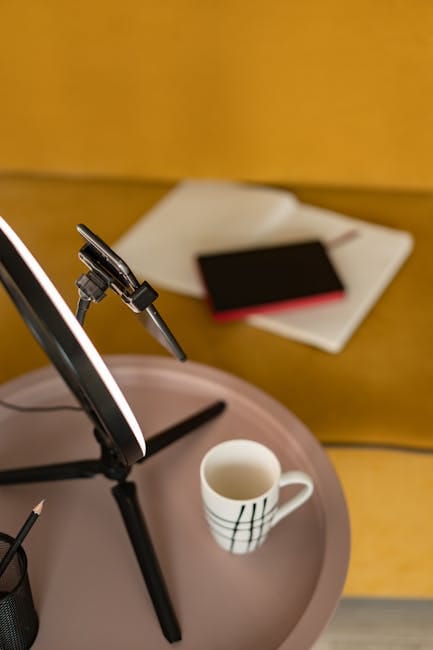How Physiological Responses Are Analyzed in Polygraphy

How Physiological Responses Are Analyzed in Polygraphy
Polygraphy, commonly known as lie detection, is a fascinating field that combines psychology, physiology, and technology to determine whether a person is being truthful. The process involves analyzing physiological responses to assess truthfulness. This blog post delves into how these physiological responses are analyzed in polygraphy, shedding light on the science behind it and its applications.
<h2>What is a Polygraph Test?</h2>
<p>A polygraph test, often referred to as a lie detector test, measures and records several physiological indicators such as heart rate, blood pressure, respiration, and skin conductivity. The underlying principle is that deceptive answers will produce physiological responses that can be differentiated from those associated with non-deceptive answers.</p>
<h2>The Science Behind Polygraphy</h2>
<p>Polygraphy is based on the premise that physiological responses can indicate stress or anxiety, which often accompany deceptive behavior. While the accuracy of polygraph tests is a topic of debate, proponents argue that the tests can be a useful tool when administered and interpreted by an experienced examiner.</p>
<h3>Key Physiological Responses Measured</h3>
<p>The polygraph test measures several physiological responses, each serving as an indicator of the subject's state of mind. Here are the key components:</p>
<ul>
<li><strong>Heart Rate:</strong> An increase in heart rate can suggest stress or anxiety.</li>
<li><strong>Blood Pressure:</strong> Elevated blood pressure is another potential indicator of stress.</li>
<li><strong>Respiration:</strong> Changes in breathing patterns, such as rapid or shallow breathing, can be a sign of nervousness or deceit.</li>
<li><strong>Galvanic Skin Response (GSR):</strong> This measures the electrical conductance of the skin, which increases with perspiration, often linked to stress or fear.</li>
</ul>
<h2>How Polygraph Tests Are Conducted</h2>
<p>Polygraph tests are conducted in a controlled environment to ensure accuracy. The process typically involves several stages:</p>
<h3>Pre-Test Phase</h3>
<p>During the pre-test phase, the examiner explains the test procedure to the subject and establishes a baseline for their physiological responses. This phase is crucial for building rapport and ensuring the subject understands the questions.</p>
<h3>Questioning Phase</h3>
<p>The questioning phase involves asking a series of questions while the subject's physiological responses are recorded. These questions can be categorized into three types:</p>
<ul>
<li><strong>Irrelevant Questions:</strong> These are neutral questions that are not related to the matter under investigation.</li>
<li><strong>Relevant Questions:</strong> These questions pertain directly to the issue being investigated.</li>
<li><strong>Control Questions:</strong> These are designed to elicit a physiological response and are used as a comparison against relevant questions.</li>
</ul>
<h3>Post-Test Phase</h3>
<p>In the post-test phase, the examiner reviews the data collected and conducts an analysis to determine whether there are significant physiological changes in response to relevant questions. This analysis helps the examiner make an informed judgment about the subject's truthfulness.</p>
<h2>Analyzing Polygraph Data</h2>
<p>Analyzing polygraph data requires expertise and experience. The examiner looks for patterns and significant deviations in the physiological responses to relevant questions compared to control and irrelevant questions. Here are some key aspects of the analysis:</p>
<h3>Comparative Analysis</h3>
<p>The examiner compares the physiological responses to different types of questions to identify any anomalies. For example, a significant increase in heart rate or skin conductivity in response to a relevant question compared to control questions may indicate deception.</p>
<h3>Scoring Systems</h3>
<p>Various scoring systems are used to interpret polygraph data. One common method is the numerical scoring system, where responses are assigned numerical values based on the magnitude of physiological changes. A cumulative score is then calculated, which helps in making a final assessment.</p>
<h3>Statistical Analysis</h3>
<p>In some cases, statistical analysis is employed to enhance the accuracy of polygraph results. Advanced algorithms and machine learning techniques can be used to analyze large datasets, improving the reliability of the test.</p>
<h2>Reliability and Validity of Polygraph Tests</h2>
<p>While polygraph tests can provide valuable insights, their reliability and validity are subjects of ongoing debate. Several factors can influence the accuracy of a polygraph test, including the skill of the examiner, the subject's psychological state, and the testing conditions.</p>
<h3>Accuracy Rates</h3>
<p>Studies have reported varying accuracy rates for polygraph tests. According to the American Polygraph Association, polygraph tests have an accuracy rate of approximately 87%. However, critics argue that the potential for false positives and false negatives limits their reliability.</p>
<h3>Legal and Ethical Considerations</h3>
<p>The use of polygraph tests in legal and employment settings raises ethical and legal questions. In some jurisdictions, the admissibility of polygraph evidence in court is limited, and its use in employment screening is restricted.</p>
<h2>Applications of Polygraphy</h2>
<p>Despite the controversies, polygraph tests are used in various fields, including criminal investigations, security screening, and therapeutic settings. Here are some common applications:</p>
<h3>Criminal Investigations</h3>
<p>Polygraph tests are often used by law enforcement agencies to assist in criminal investigations. They can help identify suspects, corroborate witness statements, and verify the credibility of informants.</p>
<h3>Security Screening</h3>
<p>Government agencies and private organizations may use polygraph tests for security screening to assess the trustworthiness of employees. This is particularly common in sensitive positions that require access to classified information.</p>
<h3>Therapeutic Settings</h3>
<p>In therapeutic settings, polygraph tests can be used as a tool to facilitate treatment. For example, they may be used in the management of sex offenders to monitor compliance with treatment programs.</p>
<h2>Tips for Undergoing a Polygraph Test</h2>
<p>If you are scheduled to take a polygraph test, here are some tips to help you prepare:</p>
<h3>Stay Calm</h3>
<p>It's natural to feel nervous, but try to stay calm. Practicing relaxation techniques such as deep breathing can help manage anxiety.</p>
<h3>Be Honest</h3>
<p>Honesty is crucial during a polygraph test. Attempting to deceive the examiner can lead to inconclusive or inaccurate results.</p>
<h3>Understand the Process</h3>
<p>Familiarize yourself with the polygraph process and ask the examiner any questions you may have. Understanding what to expect can help reduce anxiety.</p>
<h2>Conclusion</h2>
<p>Polygraphy is a complex and intriguing field that leverages physiological responses to assess truthfulness. While the reliability of polygraph tests continues to be debated, they remain a valuable tool in various applications, from criminal investigations to therapeutic settings. Understanding how physiological responses are analyzed in polygraphy can provide insights into the science behind lie detection and its practical implications.</p>
<p>Whether you are a professional in the field or someone preparing for a polygraph test, knowledge of the process and its nuances can be beneficial. As with any tool, the effectiveness of polygraphy depends on the skill of the practitioner and the context in which it is used.</p><p><a href="https://morganpolygraph.com">For more info, click HERE</a></p>
